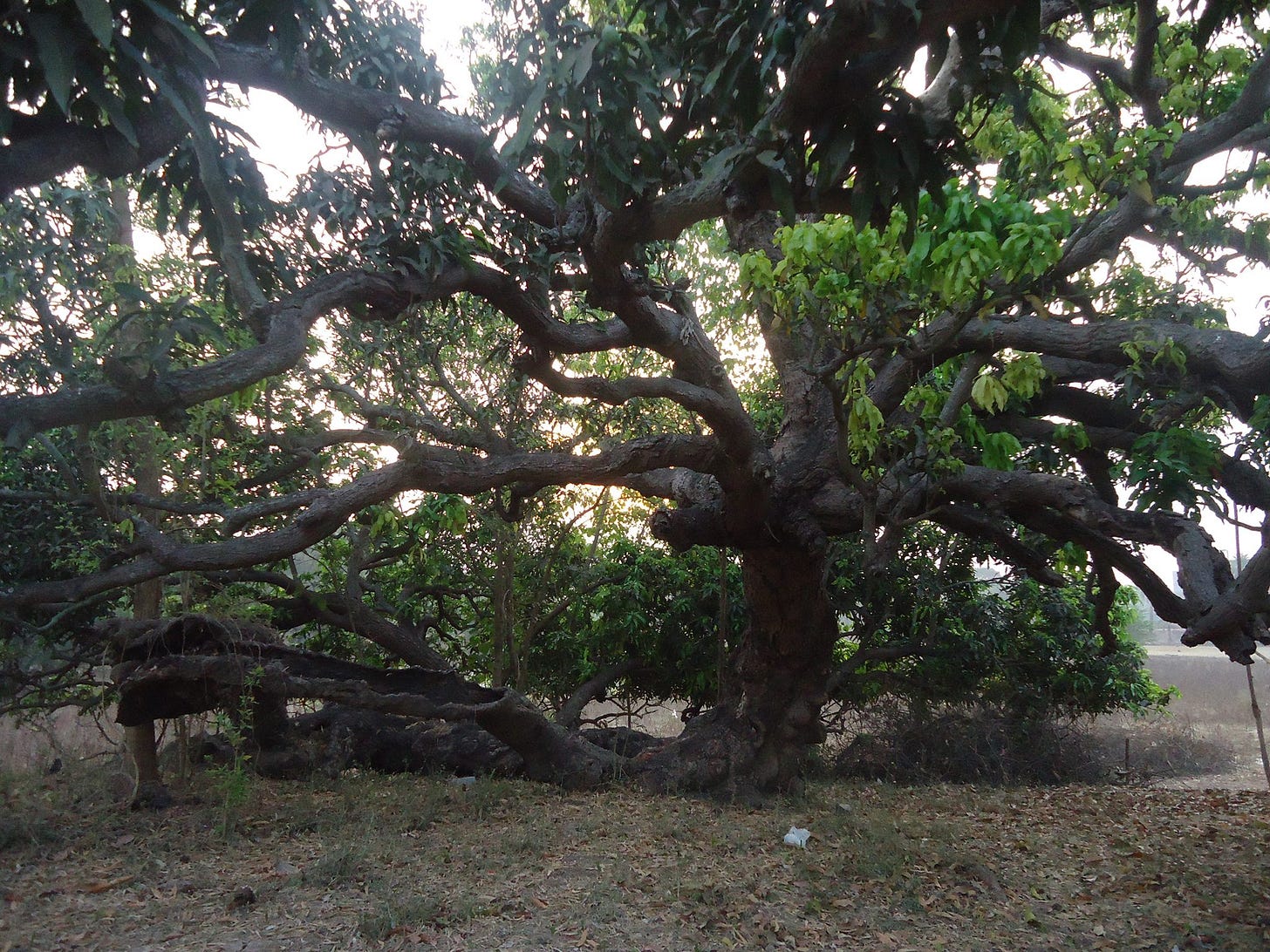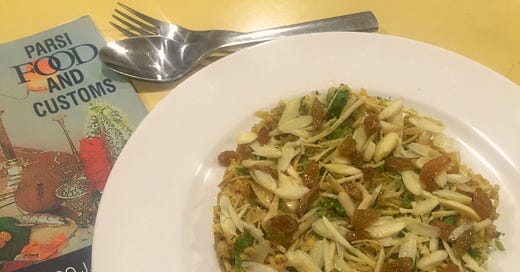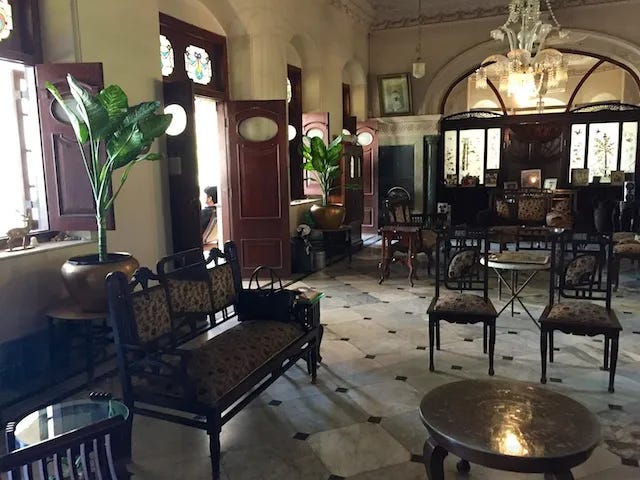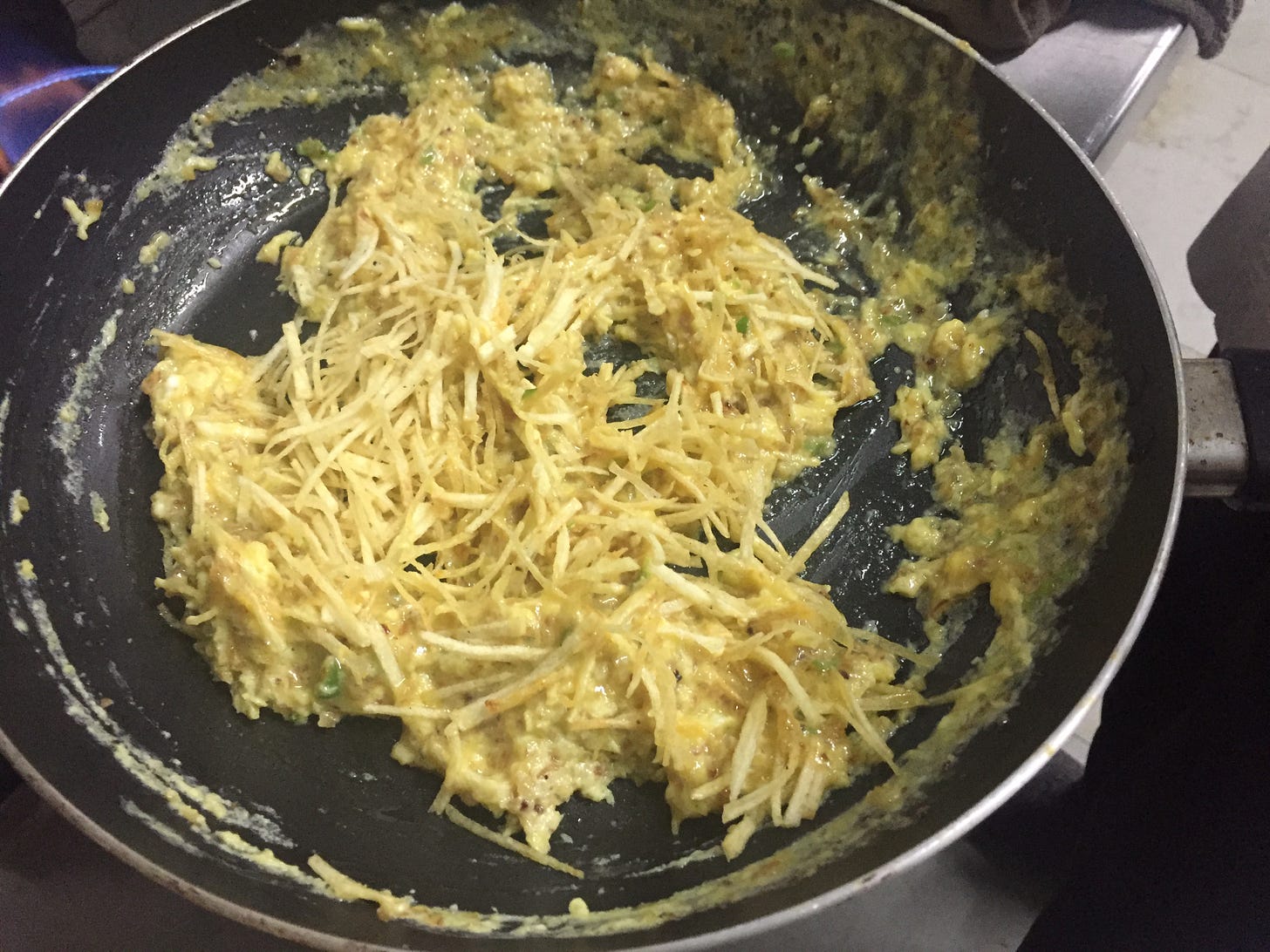My history with the ghee-laden Bharuchi Akoori
History doesn't just come in the form of museums, temples and books.
I surprised myself when I signed up for the Zoroastrian Return to Roots (RTR) program in 2015 - an immersion experience for Parsi Zoroastrian** youth to travel to India and explore their religion, culture and identity.
Museums don’t fascinate me. The thought of traipsing through ancient temples tires me.
If I’m being honest, I had mostly joined the trip hoping to learn more about Parsi food history. Six days into the trip, my stomach was happy with me.
That was until we started the Gujarat part of our trip.
Libraries, fire temples and history galore.
Don’t get me wrong. Seeing an ancient Avestan manuscript written in Iran dating back to 1323 AD did fill me with awe. And, I was so proud of my Parsi ancestors when I heard about Sanjan’s magical “walking” mango tree - one of Gujarat’s 50 heritage trees - which was planted by Parsis living in Sanjan over 1300 years ago.

But by the time we drove into Bharuch and started hearing about Bharuch being the second oldest city in India with a history dating back 8000 years, I was exhausted.
Hot. Sweaty. Hungry. Definitely not in the mood to go look at some old clocks from hundreds of years ago!
Which is how I found myself chilling out at Piloo Ginwala’s bungalow while the others explored old houses in Bharuch’s Parsivad - an old area of Bharuch previously occupied mostly by Parsis. Piloo Aunty was hosting our group for the afternoon and given everyone was tired of eating rich, meaty, Parsi lunches, she had organised a Bharuchi staple lunch, Dal Gosht for us (which was ironically, also heavy and rich).
Piloo Aunty and I were sipping tea sitting on her Victorian-era Lovers Chair when I began telling her about my Parsi food blog. One thing led to another and I asked her about a strange egg dish I had come across, the Bharuchi Akoori, in Bhicoo Maneckshaw’s Parsi Food & Customs cookbook.
Could it be true that we Parsis had a dish that used six hundred grams of ghee? It sounded absurd!
Ghee, if you’re part of the uninitiated, is a fat Indians revere and cook with on the regular. But six hundred grams would be excessive even by ghee aficionado standards.
Piloo Aunty smiled and told me that not only was it true but that she would teach me how to make it right away. I couldn’t come to Bharuch, meet a local Bharuchi and not eat Bharuchi Akoori.
As she pulled me into her kitchen, asking her house cook to fetch us six eggs, I decided it was too late to tell her about my mental allergy to eggs. Oh, the sacrifices I made in the name of documenting our unique cuisine!
The cook handed me the rather large eggs Piloo Aunty’s hens had laid yesterday and a steel bowl. As I whisked them together, Piloo Aunty pried the lid of her Amul Ghee tin open and into the saucepan went two, four, SIX tablespoons of ghee. When the ghee was hot and shimmering, she sauteed broken cashew pieces and raisins because not only did this Akoori have a shit ton of ghee, we were going to add in some dried fruit too.
She set aside the plump, golden raisins and toasty cashews and began to sautee some onions. Meanwhile, the cook began cutting thick slices of crusty Brun bread the bread walla had delivered in the morning. When the onions were caramelised, Piloo Aunty instructed me to add the eggs in a thin stream while she sprinkled in generous handfuls of the dried fruits and crispy Salli (fried potato sticks).
Two minutes later, our Akoori was ready. “Here you go. Heart attack on a plate”, she giggled
The obvious word to describe the dish might be decadence. But, if you asked me? I’d choose layers.
Eggs, buttery golden from the ghee that pooled near the edges of the plate. Nutty, brown cashews and sweet raisins stood proudly among the eggs. And the salty Salli, both inside the Akoori and sprinkled on top, made my mouth water. I still remember scooping up the silky eggs on my thin slice of crusty Brun bread before devouring it in silence.
Later that afternoon, as we walked around Bharuch and took photos by the water where hundreds of ships used to dock, my mind wandered back to the Akoori I had just eaten.
Which carb-obsessed person invented this dish? Was it made for a traveller that a businessman was trying to impress? Or, was it created by a cook who didn’t care about the cost of dry fruit?
I would never know the full history.
As the years passed, I forgot about Bharuch’s Parsivad, with its dusty, lonely mansions and cobblestone streets. But the creaminess of the eggs interspersed with the crunch of the Salli and the sweetness of the raisins has stayed with me.
My history with Bharuchi Akoori began that day at Pilloo Aunty’s house, and I wasn’t going to squander it by not sharing her recipe with you (paid subscribers only).
**Parsi Zoroastrians are today one of India’s tiniest communities. The latest census in the mid-2010’s puts us at just over 120,000 globally. Yours truly is a Parsi Zoroastrian that’s been documenting Parsi food since 2012. Our ancestors moved to India, first landing at Sanjan approximately 900 AD from the Pars region of Persia to escape the Arab invasion. The Gujarat port cities of Sanjan, Navsari, Surat, Bharuch and Ankleshwar were Parsi strongholds until most of the community moved to larger cities like Mumbai and Delhi. Our food is representative of our immigration across thousands of years.
Keep reading with a 7-day free trial
Subscribe to Beyond Butter Chicken to keep reading this post and get 7 days of free access to the full post archives.






